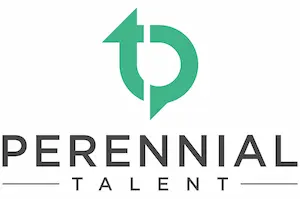Using Competencies as a Talent Management Tool
Defining work in an observable and measurable way by using competencies can become the backbone of your talent management applications. Competencies become a talent management tool that helps to ensure your organization’s talent management strategy is aligned with your business strategy.
We recommend that you begin by implementing competencies into one specific talent management application before you start to integrate them into your entire talent lifecycle. Often it is a good idea to start with an area that is least threatening to employees, such as learning and development. Over time, competencies can become the foundation of your entire talent lifecycle.
Below, we explore the benefits of using competencies across the various talent management applications.
Hiring
Defining the key requirements for your positions allows you to find and hire people that not only have the skills required for the job but are also able to demonstrate behaviors that fit with your organization’s values. You can then include these requirements in your job postings and identify tools that can be used to assess candidates against these requirements. Whatever tools you decide to use, whether it is pre-screening tools, behavioral based interview questions, tests, and/or reference checks, it is important to ensure that you have a training program in place to teach staff and HR professionals how to use them effectively during hiring.
On-boarding
Competencies allow new hires or newly promoted employees to become familiar with the nuances of the job, which makes it easier for them to understand what success looks like and what is expected of them. When you allow new employees to self-assess against the requirements that have been defined for their role, they are able to understand their strengths and what gaps they may need to close to be successful. Implementing competencies into your onboarding program requires tools such as job descriptions, assessments, learning activities, and targeted onboarding or orientation programs tied to the job requirements.
Performance Management
Performance management and evaluation is best considered as an ongoing process rather than a single event. When employees and their managers clearly understand the skills, abilities, knowledge, and competencies required for their role, it makes performance discussions easier and more effective. Improvement plans for competency-based reviews are effective because they often focus on total job performance, not just one specific area. Assessment tools, training for managers and employees on how to deliver and receive feedback, development plan templates, and learning activities mapped to the job requirements are needed to implement competencies or NOS into your performance management program.
Learning and Development
Employees tend to stay with employers who provide opportunities for continued growth and development. Assessments can help you to do just that. They allow employees to rate their own performance against the observable and measurable requirements of their job and identify areas of strength and those areas in need of development. They can then use this information to create personalized learning and development plans. Assessments also allow an organization to understand where to focus their learning and development resources, such as coaching and training courses. Incorporating competencies or NOS into your learning program requires you to define the skills, abilities, knowledge, and competencies needed for success and then map these to learning and development activities (e.g., courses, job rotation, coaching). You will also need assessment tools and individual learning and development plans.
Career Pathing
Defining the key requirements for all jobs allows employees to gain a clear understanding of the expectations for their current role as well as any roles they aspire to transition to. This allows employees to take ownership of their own career trajectories. Implementation requires a clear map of all roles within an organization, including the required knowledge, skills, experience, and competencies for each role. Assessment tools can help employees measure their current status against their selected career goals. Your career development program should also include individual career plans and a catalog of learning and development opportunities linked to all the job requirements.
Succession Planning
Understanding a workforce’s skillsets makes filling key positions and planning for succession and promotion easy! By using competencies you can begin to groom existing employees to take over mission-critical positions. Through assessments and individual employee career goals, you can better identify which employees display the capacity to perform successfully and create organizational succession plans. Implementing competencies into your succession planning program requires you to define mission-critical positions, the key requirements for those positions, assessment tools, and learning and development options.


